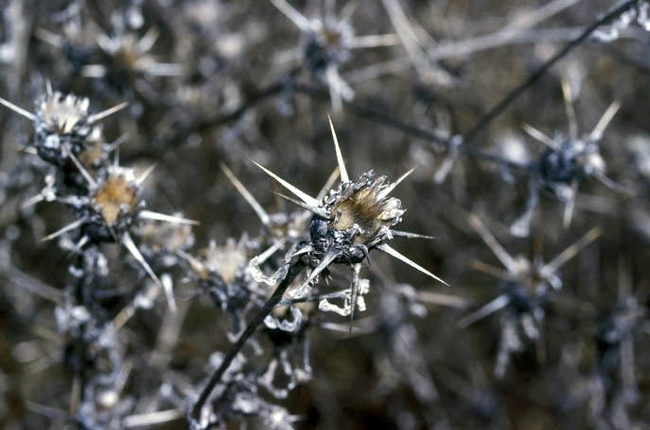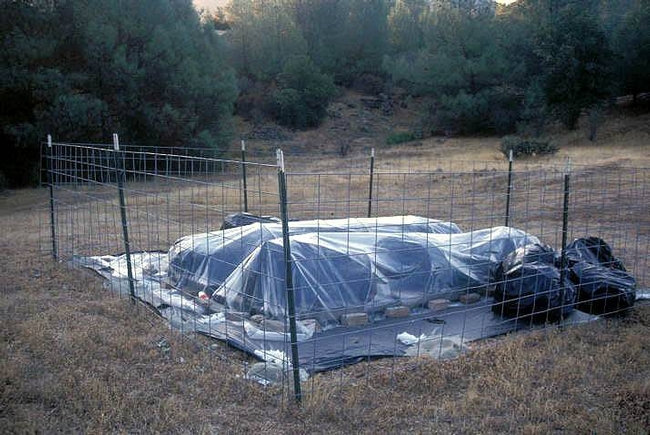
Research by Jim Stapleton, a UC Cooperative Extension advisor and Statewide Integrated Pest Management Program Coordinator for Natural Resources, based at the Kearney Agricultural Research and Extension Center, was published as Feasibility of solar tents for inactivating weedy plant propagative material in the March 2012 issue of the Journal of Pest Science.
Stapleton was inspired to conduct the study when a fire crew came upon a patch of Iberian starthistle growing along a stream in the Sierra foothills near Mariposa. Iberian starthistle is a robust, spiny weed native to the Middle East that, left unchecked, can dominate entire landscapes.
“Crews were going through and cutting dried plants and stacking them, but the seeds survived,” Stapleton said. “If you start moving plant material around with viable seeds, seeds are liable to spread, making the problem worse instead of better.”
Iberian starthistle is only one of many exotic, invasive plants that are capable of transforming California’s open areas into useless and unsightly tracts of land. On rangeland, for example, such weeds diminish desirable annual rangeland feed for cattle and wildlife. Weeds can shade out native wildflowers, make recreational areas inaccessible and, in dense infestations, become a fire laddering fuel.
In the past, such weeds may have been stacked and burned, but fire danger and air quality regulations have forced land managers to find alternatives.

“You wouldn’t want to try this on a 40-acre area,” Stapleton said. “Eradication of weeds with solar tents is best suited for small-scale weed infestations in warm climates.”
For the research project, Stapleton constructed three replicate solar tents with concrete rubble, mulberry shoots and clear plastic tarps. He placed johnsongrass rhizomes inside black trash bags along with about one cup of water. The sample bags were left inside the solar tents for 72 hours.
“Regardless of where you are, regardless of financial resources, you should be able to construct a solar tent,” Stapleton said. “Most of the materials needed – rocks and sticks – are easy to find on site.”
Air temperature inside the sample bags rose to 158 degrees Fahrenheit. Over the three days of the experiment, the rhizomes were exposed to temperatures 140 degrees and higher for 10 hours. None of the rhizome segments treated for three days in the solar tents sprouted. In contrast, rhizomes maintained in clear vegetable storage boxes and kept indoors for comparison all sprouted.
Annotated diagrams for suggested construction of solar tents can be found on the UC Solarization website.